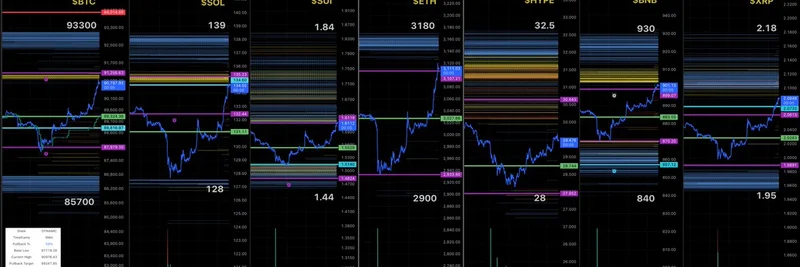The Tweet That Ignited the Discussion
Crypto journalist Laura Shin recently shared a provocative tweet that's stirring up the Bitcoin community. Posting a clip from her Unchained podcast, she posed the question: "Bitcoin was built to replace banks, not to store NFTs. Or was it?" This teaser highlights a clip from episode 918 featuring Adam Back, CEO of Blockstream, debating Bitcoin's direction.
In the clip, Back argues against what he sees as "spammers" cluttering the network, drawing parallels to past events like Vitalik Buterin's departure to found Ethereum in 2014. He suggests Bitcoiners can incrementally make it tougher for these users, pushing them elsewhere to preserve Bitcoin's core as a payment system.
You can check out the full tweet here and listen to the episode on Unchained's website.
Diving into the Podcast: Core vs. Knots Debate
The episode, titled "Bitcoin Core vs Knots: Why Developers Are Fighting Over a Coming Change," brings together Adam Back and Bitcoin developer Chris Guida to hash out a technical rift in the Bitcoin ecosystem. At the heart of it is OP_RETURN, a script opcode that allows small amounts of data to be attached to transactions—think up to 80 bytes since 2014.
Bitcoin Core, the main implementation, wants to lift this limit, potentially allowing more data on the chain. On the flip side, Bitcoin Knots—a variant—has code to keep restrictions in place, aiming to curb what some call "spam." Spam here refers to non-financial data like images, NFTs via Ordinals, or even meme tokens built on protocols like Runes.
Back, a cypherpunk veteran often credited with inspiring Satoshi Nakamoto, emphasizes protecting Bitcoin's integrity as sound money. He views excessive data as a threat that could drive up fees and hinder everyday use. Guida echoes this, noting how past resistance to changes pushed innovators like Buterin away, but argues it's necessary to maintain focus.
The discussion touches on miners' ability to bypass filters and the decentralized nature of nodes—about 22% run non-Core software like Knots. It's a reminder that Bitcoin's strength lies in its resistance to change, but that could stifle innovation.
Community Reactions: Purity vs. Progress
The tweet didn't go unnoticed, sparking replies that mirror the broader debate. One user quipped, "Even gold gets turned into jewelry," suggesting Bitcoin can handle extras without losing its value as a store of wealth.
Others pushed back: "Bitcoin certainly needs to evolve and this can greatly push its value," while a critic noted, "bro is literally building custodial (BANKING) solutions for bitcoin," calling out perceived hypocrisy in Back's stance given Blockstream's products like Liquid Network.
Another reply highlighted specialization: "lot's of chains are there to store NFT's," implying Bitcoin should stick to money. These responses show the split—purists want a lean network, while progressives see room for memes and NFTs to attract users.
What This Means for Meme Tokens on Bitcoin
For meme token enthusiasts, this debate hits close to home. Protocols like Ordinals (for NFTs) and Runes (for fungible tokens) have brought a wave of meme coins to Bitcoin, from Pepe-inspired tokens to quirky experiments. But high fees from network congestion have made minting and trading pricey, sometimes over $100 per transaction during peaks.
If Knots' approach gains traction, it could limit data-heavy activities, potentially driving meme creators to chains like Solana or Ethereum, where fees are lower and scalability is better. On the other hand, lifting OP_RETURN could boost Bitcoin's versatility, making it a hotter spot for memes and increasing adoption.
As a meme token hub, Bitcoin offers unique appeal with its security and decentralization. But the "soul" question boils down to balance: Can Bitcoin evolve without diluting its anti-bank ethos? Back's view leans toward caution, but the market might decide otherwise.
Stay tuned as this soft fork drama unfolds—it could reshape how we think about meme tokens in the Bitcoin ecosystem. For more on meme token trends, check out our knowledge base.

